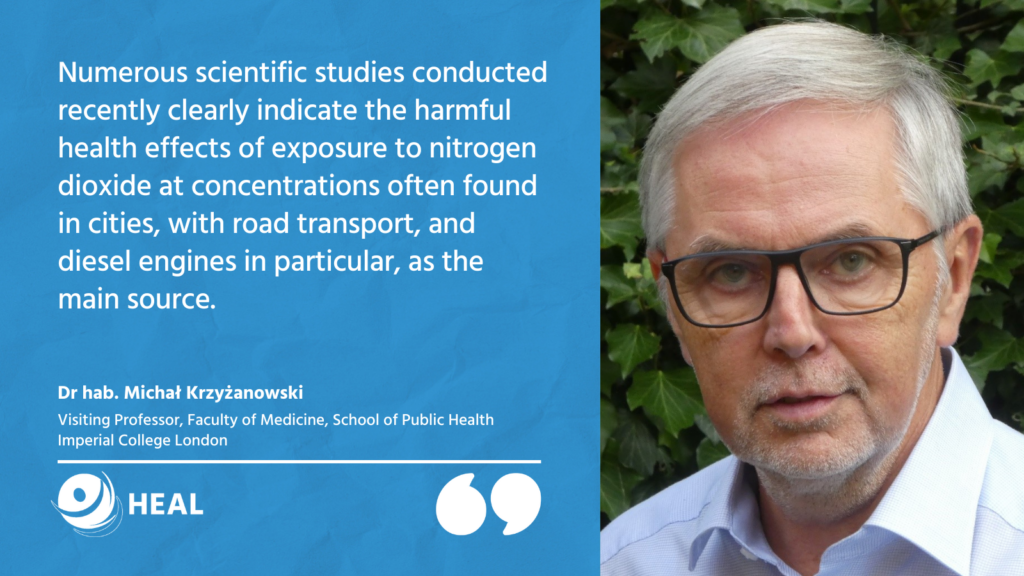A new science review commissioned by the Health and Environment Alliance (HEAL) shows the significant impact of the air pollutant nitrogen dioxide (NO2) on health.
Professor Michal Krzyzanowski, Visiting Professor at the Imperial College London, who authored the science review, explains: “Numerous scientific studies conducted recently clearly indicate the harmful health effects of exposure to nitrogen dioxide at concentrations often found in cities, with road transport, and diesel engines in particular, as the main source.
 Other sectors of NO2 emissions include energy production and agriculture, as well as industry and utility service. The briefing also zooms in on Poland, as one of the most polluted countries in the EU, leading to a high health burden.
Other sectors of NO2 emissions include energy production and agriculture, as well as industry and utility service. The briefing also zooms in on Poland, as one of the most polluted countries in the EU, leading to a high health burden.
The science on and knowledge about health effects of NO2 air pollution has increased significantly over the last ten to fifteen years. It is now confirmed that NO2 exposure can lead to respiratory and circulatory premature death (from both short- and long-term exposure), to the development of asthma in children and in adults, to bronchitis in children, and it can deteriorate the health of people living with respiratory or cardiovascular disease. In addition, studies are now able to distinguish between health impacts caused by NO2, and impacts caused by other pollutants including particulate matter PM2.5. .
Given the growing body of evidence on the health impacts of NO2, following a review of the science, the World Health Organization “(WHO) now recommends a much stricter maximum annual average concentration of this pollutant in the air, 10 μg/m3 from previously 40μg/m3.
At EU level, members of the European Parliament and Environment Ministers are currently in the process of updating the legally binding limit values for various pollutants, including NO2.
In view of the urgency to act on the large health burden from air pollution, and in view of the science demonstrating the health impacts, HEAL advocates for the following:
- Change the legally binding limit value for NO2, to 10 ug/m2 annual average for the maximum concentration, by 2030 (which is fully in line with the recommendation by the World Health Organization), and reduce the possibility for exemptions to this more health protective limit
- Improve information requirements by sending out alerts on NO2 peak pollution and associated health risks, as well as regular information on health effects of NO2; and improve air quality indeces to include information on health risks and for vulnerable groups
- Improve monitoring of NO2 concentrations by monitoring in smaller geographic locations, and at locations frequented by vulnerable groups (such as children, those suffering from disease, or those facing health inequalities), and at air pollution hot spots
- Regularly review the evidence on the health effects of NO2, and other air pollutants, as part of an independent review by the World Health Organization (WHO)



